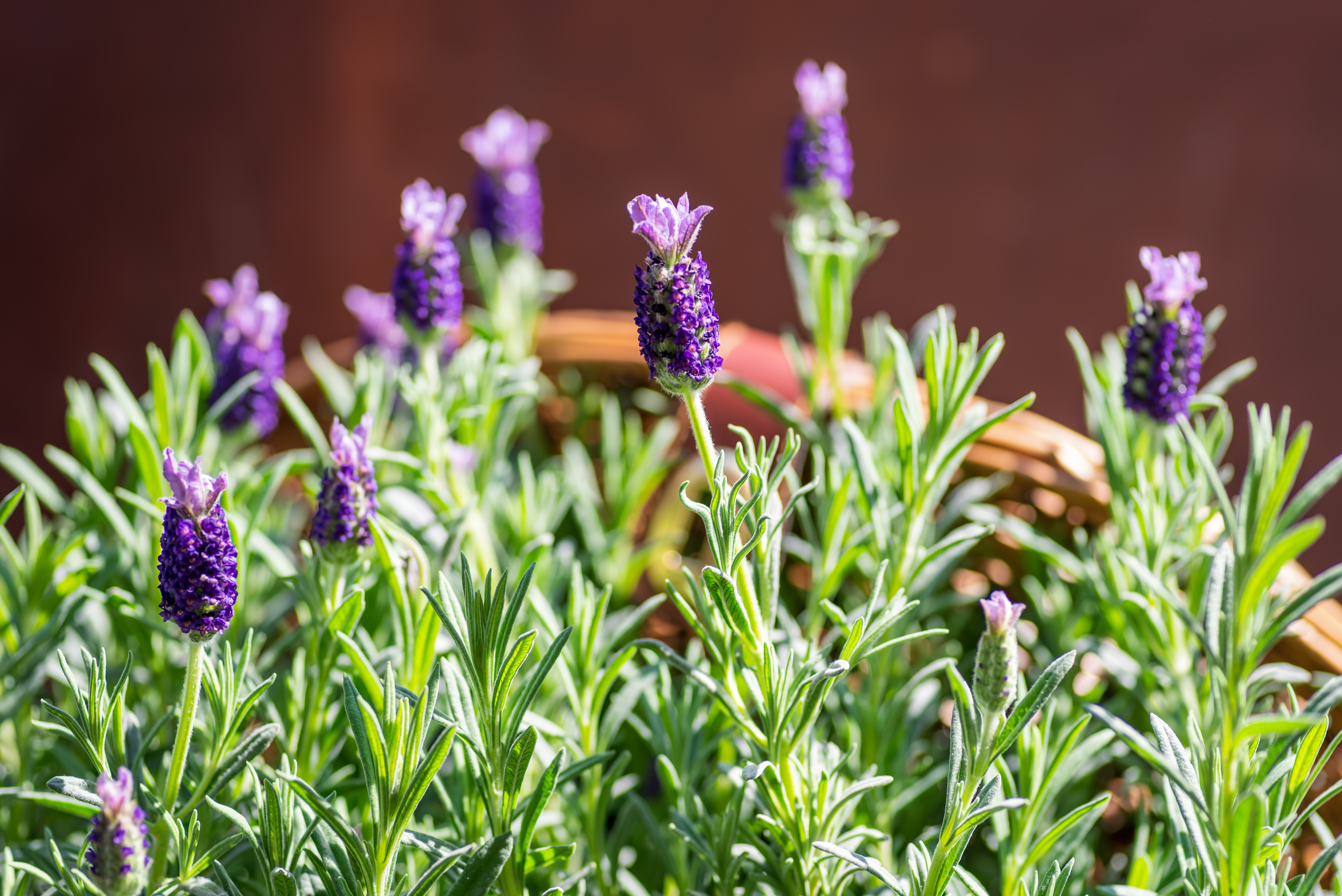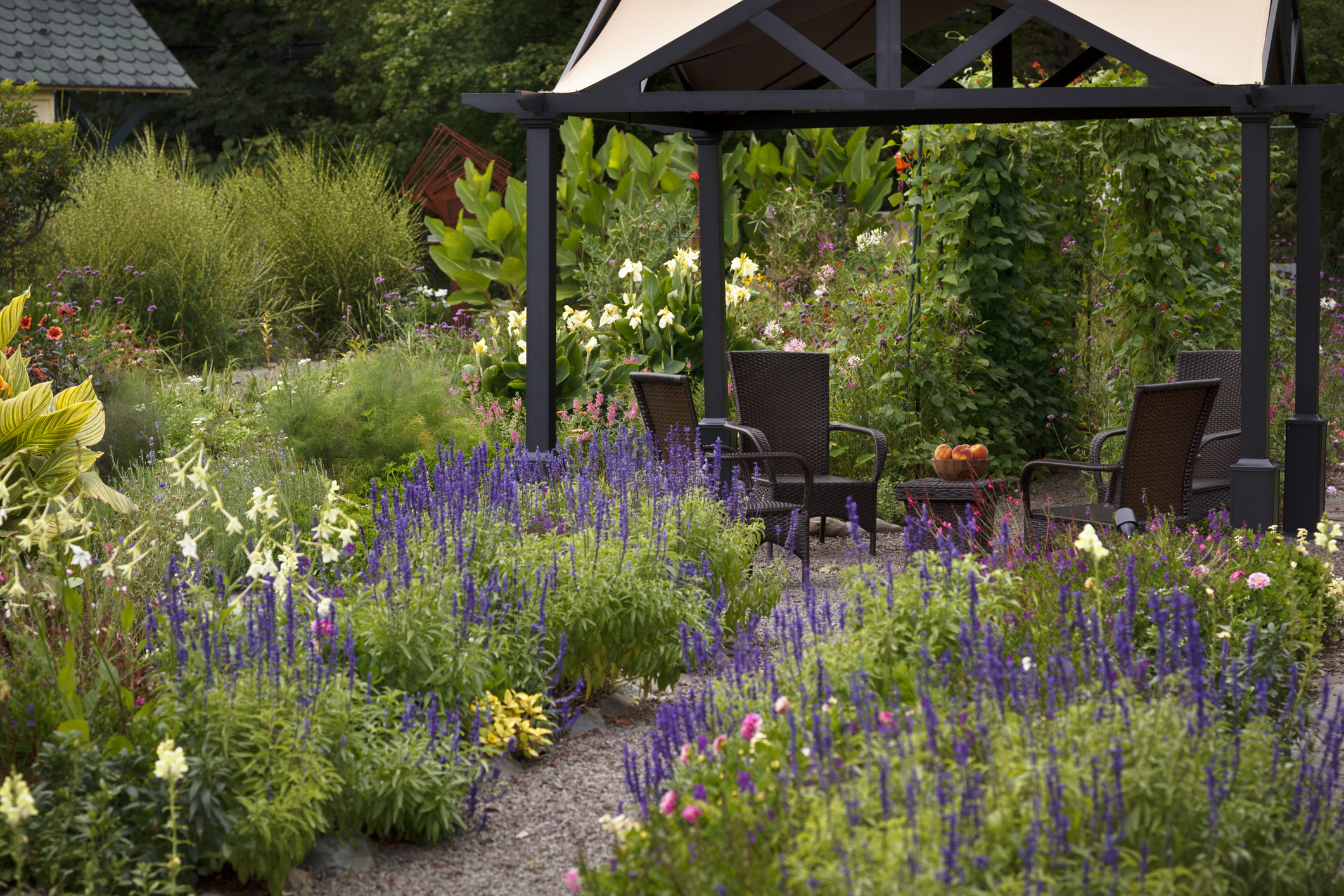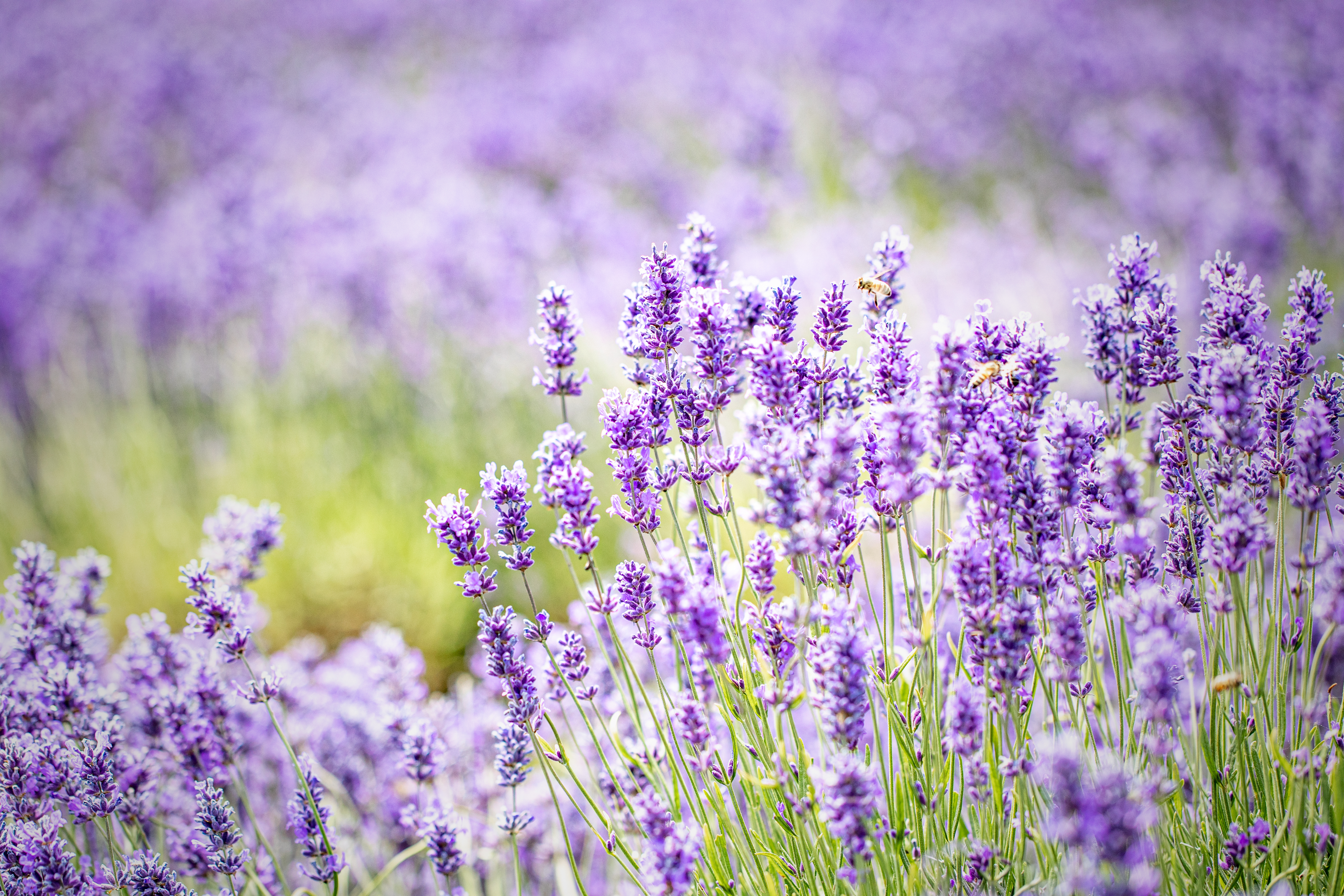
I’m after some European garden inspiration, and lavender plants are my ticket to Provençal elegance. Easily recognized for their wispy long-stemmed flowers and compact light green foliage, lavenders are a favorite flower of both DIY gardeners and professional landscape designers — and with good reason. Not only are these flowers gorgeous, they’re also drought-tolerant, easy to maintain, and edible!
But to get the best of these plants, there are a few planting and maintenance rules to abide by. To make sure you’re setting your plants up for success, we’ve spoken to the pros to give you their ultimate list of dos and don'ts when it comes to lavender planting.
We asked the experts to give us the lowdown on lavender care, including lavender spacing, the best lavender varieties for small backyards, and how to manage a lavender plant’s size — here's what they had to say.

How Far Apart Should You Plant Lavender?

If you're wondering where to plant lavender, the first step is to ensure you're not tangling your blooms together — as this will lead to them battling it out for root space, which is not ideal.
Lavenders dislike their roots being tampered with, so getting your spacing right the first time is critical to ensuring these perennials aren’t competing for space or nutrients as they grow. According to plant expert Bridger Konkel at Blackberry Farm, the ideal spacing is 3 feet apart. Bridger highlights that is is also important to 'choose a sunny, dry location, and make mounds of one part crushed limestone sand and local soil with two parts gravel. Plant a single young lavender plant at the center of each mound. For the first two weeks, keep the soil moist. But after that, don't be tempted to overwater. Remember, lavender thrives in dry spacious soil!"
You’ll be forgiven if you don’t have a measuring tape on hand when you plant your lavenders. A great hack for measuring in your yard is to use your gardening tools. As a rough guide, a garden trowel tends to be around 12 inches (1 foot) long. So when you’re laying out your plants on the bed, lay your trowel down between the pots to check you’ve left enough room.
How to Manage Lavender Plant Size

Lavender plant care takes a few simple steps and that includes pruning your lavender. This is also essential for managing your lavender plants’ size. Though it may seem counterproductive, pruning lavenders actually encourages the plants to keep compact and produce more flowers. Leave them to their own devices and you’ll soon have a mess of woody stems with minimal flowers and foliage!
Plant expert Bridger says the best way to manage the size of your blooms is to prune annual in the early summer. He adds: 'If the plant is overgrown, withholding fertilizer or only allowing the plant to consume a small amount of nutrients will cause it to slow and reduce in size. Be sure to prune back the dead as the plant shrinks back to the desired size'.
To keep your lavenders in a manageable shape through pruning, simply bunch together the flower stems in your hand and use some bypass secateurs to cut the stems back to just above last year’s old growth. Don’t be tempted to cut your lavender right down to old wood, as chances are it won’t flower again and may die.
The Best Lavender Varieties For Small Spaces

What are the different types of lavender? Well, there is a variety to choose from and the great thing is that this bloom can thrive in patio, planted in containers, or even in smaller beds. I particularly love them spilling over the sides of raised beds. The trick to keeping them compact is militant pruning. Lavenders that go unpruned can easily get leggy and overgrown, so our advice is keep them compact!
According to expert Bridger, there is one particular type of lavender that is particularly good at thriving under all conditions and spaces. ‘Lavandula Angustifolia is the best variety for small spaces. Its common name is 'True Lavender' or 'English Lavender' and though this is not a small variety, when managed and pruned properly, this variety is the hardiest, having the best survival rate in most conditions.’
FAQS
Can you divide lavender plants?

Dividing herbaceous perennials is a time-honored springtime task, but don’t be fooled into thinking your lavenders will benefit from being divided! Lavender falls into the herbaceous perennial category, so they must be fine to divide right? Wrong! Due to their single stem and root system, these aromatic flowers tend to fall into their own category, along with other Mediterranean garden plants like rosemary, and they strongly dislike any movement or tampering with their roots. Think of it almost like a mini tree – it would be like dividing a silver birch down the middle and expecting it to thrive.
As plant expert Bridger explains ‘It is not advised to divide lavender plants. As the plant grows, it gains a woody nature, and you risk killing the whole plant by trying to cut the roots in half.’ If you’re after smaller lavender plants, propagating from your existing plants is a great way to create smaller plants without spending extra money at the nursery!
What is the best way propagate Lavender?
Though dividing your lavenders isn’t an option, propagating is a fantastic way to create more plants from existing lavenders. But when it comes to propagating like a pro, Bridger has a secret that ensures a successful cutting every time.
He says ‘Air laying is the best method to propagate lavender. This is a process where you take an attached green stem (new wood), lay a portion of it on the ground, cover it with soil, and then water it. This allows the green stem to root before cutting to create a new root stem for planting.’
The best time of year to do this is in spring when your plant is creating new shoots, but as long as you keep the soil watered you should be able to achieve this in the summer too. Your rooted sprig should be ready to cut around 3 months after you cover it in soil.







